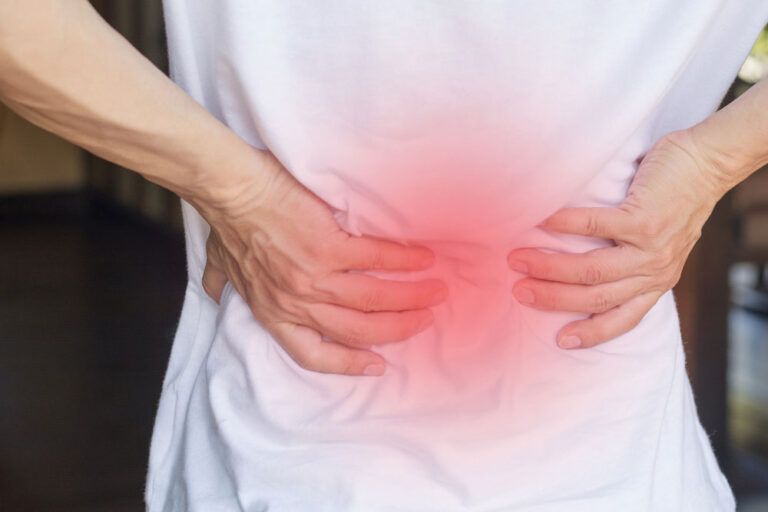Herniated Discs vs. Bulging Discs: Key Differences and Treatments

An Educational Resource by Delaware Valley Pain & Spine Institute
Spinal pain can be frustrating, limiting, and often misunderstood. Many individuals who suffer from lower back or neck discomfort are told they may have a herniated disc or a bulging disc—two terms that sound similar but differ significantly in anatomy, severity, and treatment. At Delaware Valley Pain & Spine Institute, located in Chafont, PA, Marlton, NJ, and Trevose, PA, patients often ask what sets these conditions apart and what treatment paths may provide relief. This blog explores the distinctions between herniated and bulging discs, common symptoms, diagnostic strategies, and available treatment options.
Understanding the Anatomy of a Spinal Disc
To appreciate the differences between herniated and bulging discs, it’s essential to first understand the anatomy of the spine. The spine is made up of individual bones called vertebrae, which are cushioned by intervertebral discs. These discs function like shock absorbers, preventing vertebrae from grinding against one another during movement. Each disc consists of two main parts: the nucleus pulposus (a soft, jelly-like center) and the annulus fibrosus (a tough, fibrous outer layer).
When the discs remain healthy and intact, they allow for flexibility and pain-free motion. However, wear and tear, age-related degeneration, or injury can compromise their structure, leading to disc disorders like bulging or herniated discs. The key lies in how the inner and outer disc materials respond under pressure or damage.
What is a Bulging Disc?
A bulging disc occurs when the disc protrudes outward beyond its normal boundary but the outer layer (annulus fibrosus) remains intact. Think of it like a hamburger patty that’s too large for the bun—it bulges out but hasn’t broken open. This type of disc issue tends to develop gradually and often results from chronic degenerative changes in the spine due to aging or repetitive stress.
In many cases, a bulging disc may not produce symptoms and is discovered incidentally during imaging for other concerns. However, if the bulge presses on nearby spinal nerves or the spinal cord, it can lead to pain, tingling, numbness, or muscle weakness in the affected area. Bulging discs are more common in the lumbar (lower back) and cervical (neck) regions of the spine, where mobility demands are higher.
What is a Herniated Disc?
A herniated disc, also referred to as a ruptured or slipped disc, involves a tear in the outer layer of the disc, allowing the inner nucleus pulposus to leak into the spinal canal. This condition tends to be more severe than a bulging disc and is often triggered by trauma, heavy lifting, or a sudden twisting movement. Unlike the slow development of a bulging disc, a herniated disc may appear abruptly and cause intense symptoms.
When the inner material escapes, it can compress spinal nerves or the spinal cord directly, causing sharp or radiating pain, depending on the location of the herniation. For instance, a herniated disc in the lower back might cause sciatica—pain that travels down one leg. In the neck, it may affect the shoulders, arms, or hands. This type of disc damage requires prompt attention, particularly if symptoms include loss of bladder or bowel control, which can indicate a medical emergency.
Comparing Key Symptoms
While both conditions can cause discomfort, the severity and nature of symptoms often differ. Here’s a comparative breakdown:
Common Symptoms of Bulging Discs:
-
Mild to moderate localized pain
-
Occasional tingling or numbness
-
Stiffness or reduced flexibility
-
Symptoms may be intermittent
Common Symptoms of Herniated Discs:
-
Sharp or shooting pain, often severe
-
Radiating nerve pain (sciatica or cervical radiculopathy)
-
Muscle weakness in arms or legs
-
Numbness or tingling that persists
-
Symptoms may worsen with movement or coughing
These symptoms may overlap, but their intensity and onset often provide diagnostic clues. A thorough neurological exam and imaging tests like MRI or CT scans are typically necessary for accurate differentiation.
Diagnostic Tools for Spinal Disc Disorders
To determine whether a disc is bulging or herniated, physicians rely on a combination of patient history, physical examination, and diagnostic imaging. X-rays are helpful in ruling out bone abnormalities, but MRI (magnetic resonance imaging) is the gold standard for visualizing soft tissue structures like intervertebral discs.
During the physical exam, doctors assess reflexes, muscle strength, and range of motion to identify signs of nerve involvement. In some cases, additional tests like EMG (electromyography) may be recommended to measure electrical activity in muscles and pinpoint nerve compression.
Accurate diagnosis is critical in shaping the right treatment plan, as the approach may differ depending on whether the disc is merely bulging or fully herniated.
Non-Surgical Treatment Options
Most cases of bulging and herniated discs can be managed without surgery, especially in the early stages. Conservative treatments aim to reduce inflammation, relieve nerve pressure, and restore mobility.
Nonsurgical Approaches May Include:
-
Physical therapy: Targeted exercises to improve core strength, flexibility, and posture.
-
Anti-inflammatory medications: NSAIDs like ibuprofen reduce swelling and ease pain.
-
Epidural steroid injections: Deliver corticosteroids directly around the affected nerve root.
-
Heat and ice therapy: Alternate application can help reduce pain and inflammation.
-
Activity modification: Avoiding heavy lifting or prolonged sitting to prevent aggravation.
In many cases, a combination of these strategies provides meaningful relief and prevents the condition from worsening. Consistency with physical therapy and ergonomic adjustments often play a vital role in long-term recovery.
When Surgery Becomes Necessary
Although conservative measures work for most individuals, some cases require surgical intervention—particularly when symptoms are severe, progressive, or unresponsive to non-surgical methods. Surgery may also be necessary if the disc material compresses the spinal cord or nerve roots to the point of causing neurological deficits.
The most common surgical procedures include:
-
Microdiscectomy: Removal of the herniated portion of the disc through a small incision, typically performed for lumbar herniations.
-
Laminectomy: Removal of part of the vertebral bone (lamina) to relieve pressure on the spinal cord or nerves.
-
Disc replacement: In some cases, artificial disc implantation may be recommended as an alternative to spinal fusion.
Surgery aims to relieve nerve compression and stabilize the spine, but it’s usually considered a last resort after other methods have failed.
Preventing Future Disc Issues
Prevention plays a key role in maintaining long-term spinal health. Both bulging and herniated discs often stem from poor body mechanics, sedentary lifestyles, or repetitive strain. Fortunately, lifestyle adjustments can significantly lower the risk.
Prevention Tips Include:
-
Practicing good posture while sitting and standing
-
Engaging in regular physical activity, particularly core strengthening
-
Using proper lifting techniques (bend at the knees, not the waist)
-
Avoiding prolonged sitting or staying in one position for too long
-
Maintaining a healthy body weight to reduce pressure on the spine
Smoking cessation is also important, as smoking accelerates disc degeneration by impairing blood flow and oxygen delivery to spinal tissues. Preventive care through fitness and mindfulness can delay or even prevent disc-related pain from developing.
Supporting Long-Term Spine Health
Spine conditions like herniated and bulging discs can significantly impact one’s quality of life. However, with early diagnosis, effective treatment, and proper self-care, most individuals can manage their symptoms and avoid long-term disability. At Delaware Valley Pain & Spine Institute, patients in Chafont, PA, Marlton, NJ, and Trevose, PA are encouraged to educate themselves about their condition and seek medical advice when symptoms arise.
Understanding the difference between these two common disc disorders can empower you to take control of your spine health and make informed decisions about your care.
Resources:
Andersson, G. B. J. (1999). Epidemiological features of chronic low-back pain. The Lancet.
Frymoyer, J. W. (1988). Back pain and sciatica. New England Journal of Medicine.
Mixter, W. J., & Barr, J. S. (1934). Rupture of the intervertebral disc with involvement of the spinal canal. New England Journal of Medicine.


Recent Comments